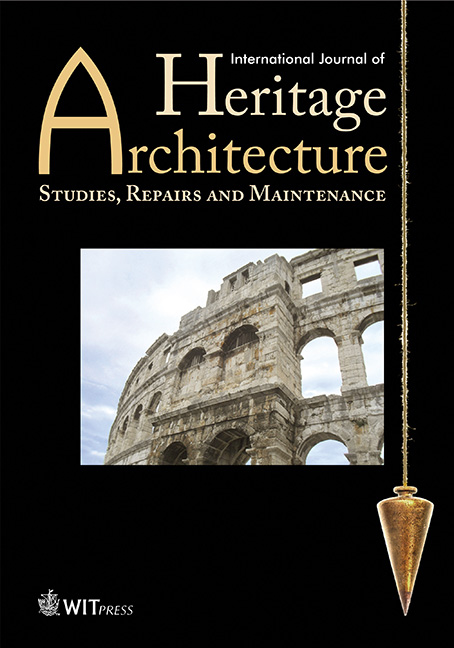PREVENTION, MONITORING AND CONSERVATION FOR A SMART MANAGEMENT OF THE CULTURAL HERITAGE
Price
Free (open access)
Volume
Volume 2 (2018), Issue 1
Pages
9
Page Range
71 - 80
Paper DOI
10.2495/HA-V2-N1-71-80
Copyright
WIT Press
Author(s)
ANTONELLA GUIDA & VITO D. PORCARI
Abstract
Nowadays, the conservation of the cultural heritage requires the development of preventive protection strategies that should be increasingly innovative, effective, long-lasting, as well as economically sustainable. Although existing legislation provides for scheduled maintenance aimed at preventing deterioration and reducing operating costs, to date there are no decision support tools to assist in the periodic planning of the interventions to be executed. The aim of the research is to define the techniques and the innovative strategies of the maintenance process, focusing on the Smart capacity of such process. The research objectives are related to specific phases.
Fact-finding phase: Carry out actions and interventions for managing available resources and for implementing policies through the development of a technological platform for planning preventative maintenance operations.
The diagnostic phase: Carried out with the support of the heritage building information modelling methodology. Its aim is to define a specific degradation phenomenon in time and space, and to measure it in order to identify the appropriate steps to take for maintenance or restoration operations.
Participatory phase: The aim is the development of a multimedia platform, accessible to every type of user. This platform should allow the exchange of heterogeneous information, through the implementation of known systems for managing digital assets.
The final result of research will be the formulation of an information and communication technologies model that indicates the optimal maintenance frequency of a work of art based on its state of degradation (measured through indicators correlated with the nature of the material and the internal and external environmental conditions, continuously monitored), cost of maintenance and durability of the interventions performed.
An additional expected result will be the development of a participatory app, designed as a tool for promoting the accessibility and usability of the digital cultural content of an asset or of a cultural itinerary, and present it as a ‘virtual tour’, and for ultimately developing a broader ‘digital culture’ of the cultural heritage.
Keywords
cultural heritage, integrated recovery, scheduled maintenance, Smart technologies, durability




